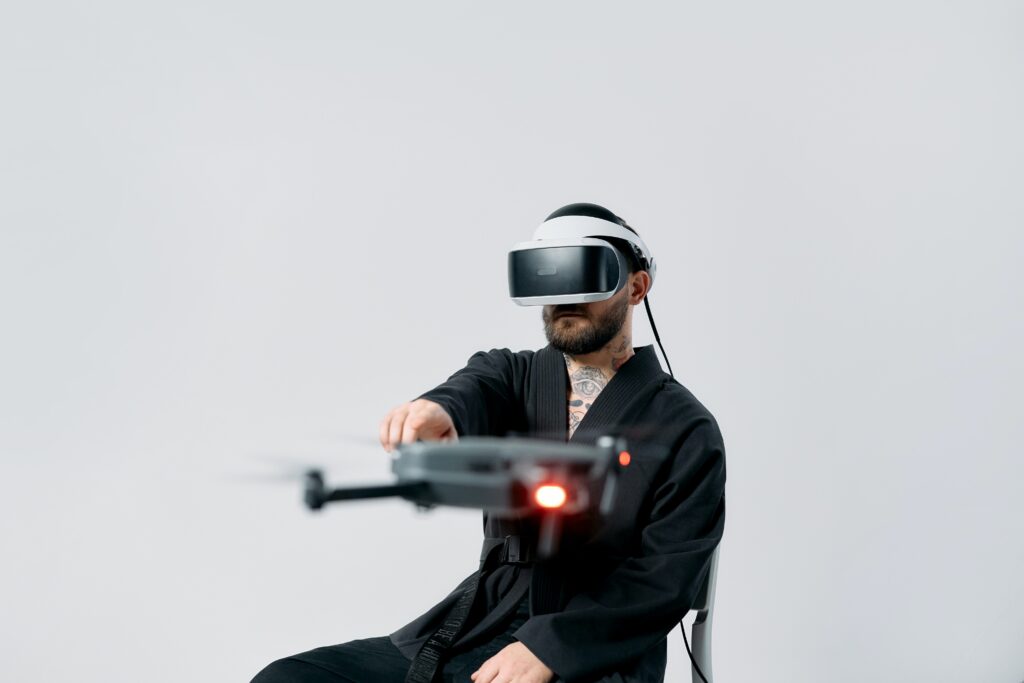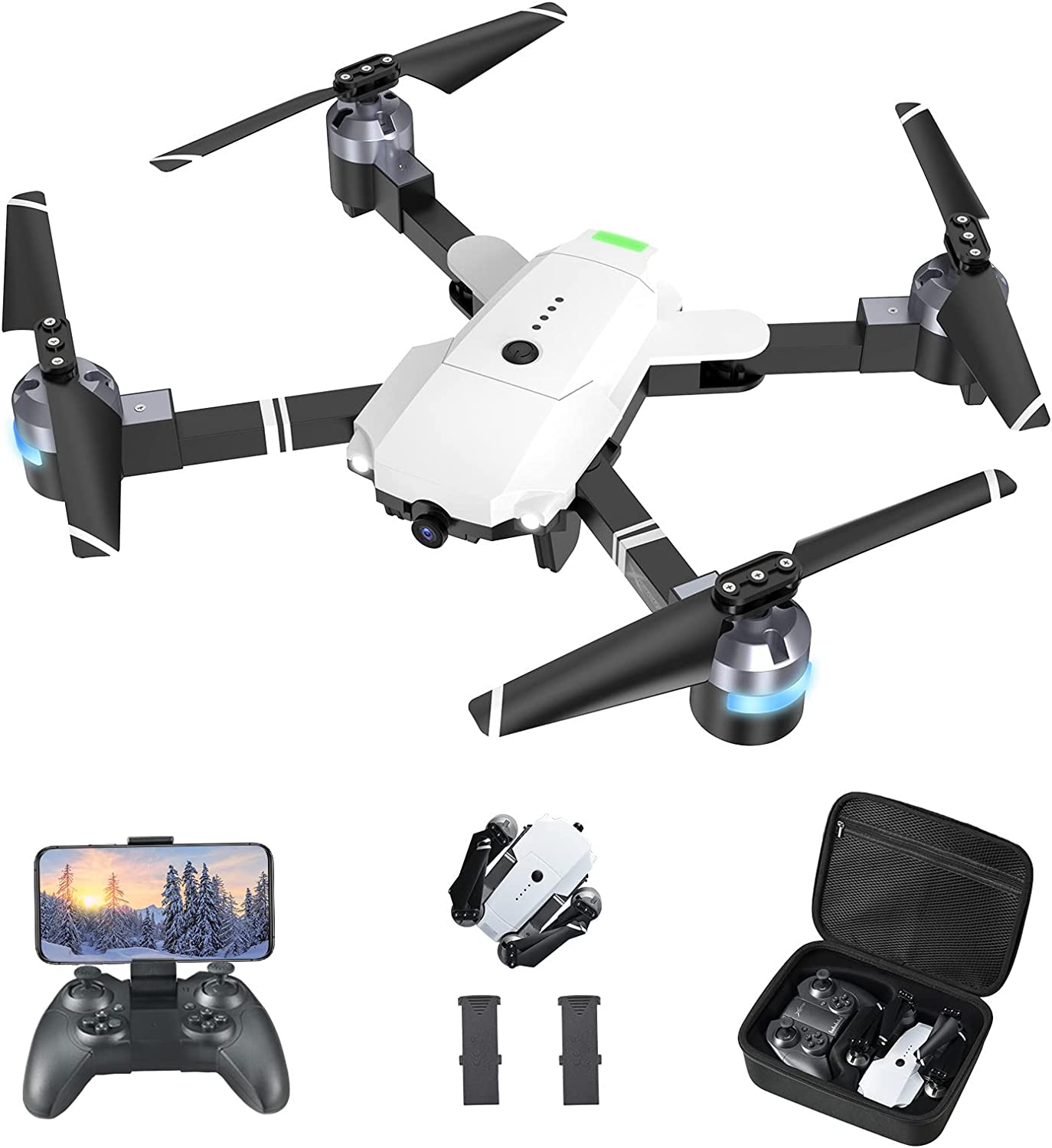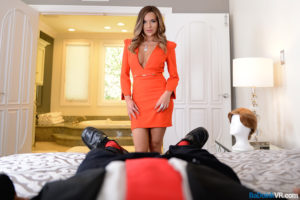A fascinating technology that has gained popularity recently is virtual reality (VR). Its immersive qualities have created new opportunities in a variety of industries, including drone flying, education, and gaming. Drone pilots can get a new and engaging experience by controlling drones using VR headsets. We’ll walk you through using a VR headset with a drone in this tutorial along with pro tips and FAQ to get you up and running in no time.
Research The Perfect Partnership
First off, it’s crucial to remember that not all drones work with VR headsets. Before attempting to utilize a VR headset with your drone, be sure that it is compatible. A first-person-view (FPV) camera may be fitted to some drones, enabling live video feeds to be sent to a VR headset for an immersive experience. Do the research before you but though to avoid any disappointment.
You should aim to purchase a VR headset that is compatible with your drone. There are several VR headsets on the market, but not all of them work with all drone types. As a result, it’s crucial to do your homework and confirm that the VR headset you buy is compatible with your particular drone.
First-Time Setup
So you’ve made the perfect purchase, and now it’s time to set up the drone for usage with your VR headset! Make sure the drone is charged and prepared to fly before anything else. Connect the VR headset next to the controller for your drone. Depending on the manufacturer and model of your drone, there are different ways to connect the headset to the controller. Please read the instruction manual for your particular model of check-out guides online to help you with this.
It’s time to turn on the drone and the VR headset now that you’ve attached the VR headset to the controller. While some VR headsets have their own power source, others could require a connection to a computer or mobile device in order to operate. Again, check your user manual for guidance.
You should be able to view a live video feed from the drone’s FPV camera in your VR headset as soon as the drone and VR headset are powered on. Ideally, most drones/VR headset pairings are mostly click and play so after initial setup you are usually good to go. Once you’re in there, piloting your drone while wearing your headset is an astonishing experience. You’ll be able to feel as though you’re in the drone’s cockpit thanks to the immersive virtual reality experience!
It’s important to understand at this point, that using a VR headset to pilot a drone calls for a particular level of skill. Beginners should try to practice safely until they’re confident. It can take some getting used to the intense experience of using a VR headset to fly a drone at first. Therefore, until you feel comfortable using the drone, practice using it in an open area free from people and other obstacles.
Enjoy the View

Flying a drone in first-person view is such an appealing advantage for controlling a drone using a VR headset. By seeing the drone’s surroundings, pilots can more precisely guide it around obstructions. It’s crucial to remember that first-person drone flying takes intense focus and situational awareness. Fast reflexes, speed, and motion sickness are all factors that you may need to consider before diving straight in.
Additionally, when operating a drone from a first-person perspective, it’s crucial to follow local drone laws. Before utilizing a VR headset to control your drone, it’s crucial to be aware of the severe rules that apply to drone operations in many different nations.
Picture Perfect – Using Your Drone for Photography
Aerial photography and cinematography can also benefit greatly from using a VR headset to control a drone. First-person drone flight offers an immersive experience that enables users to take beautiful aerial videos and pictures beyond anything they’ve seen before. However, it’s crucial to make sure you’re using the drone and VR gear in a responsible and safe manner when you’re taking your snaps or making your movie.
It’s vital to explore the region before utilizing a drone to take overhead photos or videos. Consider potential pitfalls like trees, structures, and electricity lines when determining your flying path. Strong winds and rain can affect a drone’s ability to fly steadily, so it’s crucial to take the weather into account as well. Be wary of variables and plan accordingly!
Flying the drone at a safe altitude and keeping situational awareness at all times is essential when taking aerial footage. In addition, it’s important to respect privacy rights and abide by local drone flight restrictions. Never use the drone without permission over private property or in places where people might be present.
Battery life is also an important consideration when utilizing a VR headset with a drone. The battery in your VR headset should be completely charged before taking off because it can draw a lot of power to operate. Additionally, it’s crucial to keep an eye on the drone’s battery level while in flight and land it before it runs out.
Maintaining a constant line of sight with the drone is also crucial when operating a drone while wearing a VR headset. This entails keeping the drone from flying behind objects or outside the visual field. Additionally, it’s crucial to keep the drone from taking off or landing too far from the controller because doing so could degrade the quality of the control and video signals. Always err on the side of caution and you’ll be fine!
In the end, using a VR headset with a drone can provide you with a distinctive and thrilling experience. However, it’s crucial to approach it cautiously and to put your safety first at all times. Pilots may shoot breathtaking aerial footage and feel the rush of first-person drone flight with a little effort and caution.
Competitive/Amateur Drone Racing
In recent years, drone racing has quickly grown in popularity, with both amateur and professional leagues springing up across the globe. An increasing number of enthusiasts are enthralled by the excitement of flying a small quadcopter at fast speeds over congested, challenging courses, and many see drone racing as the supreme test of ability and reflexes. Let’s examine drone racing with a little more in-depth perspective and consider why it’s so entertaining.
Some stealthy drones are specifically designed to attain maximum speed and agility and are used in competitive drone racing. Usually, races take place on specially designed tracks that are dotted with hazards that the pilots must avoid with the utmost accuracy. The quickest pilots may go at speeds of up to 100 mph, providing an exhilarating, adrenaline-filled experience.
The expertise and accuracy needed to win in competitive drone racing is one of its main appeals. Pilots must possess the split-second timing necessary to maneuver their quadcopters through confined spaces, around sharp turns, and over obstacles. The ability to fine-tune quadcopters to achieve the ideal combination of speed and maneuverability, as well as solve any technical issues that may develop during a race, is required of pilots in addition to flying talents. All these factors meld together to create a thrilling skill-based challenge that is as addictive as it is fun!
The sense of camaraderie that grows up around professional drone racing is another factor that adds to its enjoyment. Pilots often create dedicated clubs and develop strong relationships with one another, sharing tips, tactics, and advice both in person and online, as drone racing is a very new and niche activity. A lot of pilots also take part in team competitions, which ups the amount of support and challenge.
Amateur Drone Racing
On the other side, amateur drone racing is a more approachable and low-stakes variation of the sport. It often entails piloting smaller, readily available quadcopters through easier courses, frequently in unstructured areas like parks or backyards. While amateur drone racing doesn’t have the same speeds or technical requirements as professional drone racing, it nevertheless presents many difficulties and pleasures.
The sense of freedom and creativity that amateur drone racing offers is one of its key draws. Pilots can completely explore their individual interests and preferences by experimenting with various quadcopter kinds, flying techniques, and courses without being constrained by strict rules or restrictions. A great approach for newbies to the hobby to learn the fundamentals of quadcopter flight in a fun and interesting way is through amateur racing.
Amateur drone racing is fun because ultimately it’s a casual social experience. While amateur drone racing frequently takes place in groups, with pilots getting together to discuss tips, techniques, and experiences, competitive drone racing frequently tends to be more focused on individual performance. This fosters a friendly and encouraging hobby-related community, which may be a wonderful way to meet new people and form friendships.
Finally, drone racing whether professional or amateur, is a thrilling and dynamic sport that has sparked the interest of fans all over the world. The sense of talent, inventiveness, and camaraderie that the sport develops makes it a very delightful experience, whether it is through serious racing or more casual, amateur events. As drone racing gains in popularity, it’s probable that we’ll witness even more innovation and excitement in the years to come as pilots continue to test the limits of this exhilarating new sport.
FAQ for Using VR Headsets with Drones

Photo from www.amazon.com
Q: How do VR headsets work?
A: VR headset is a gadget that gives the user an immersive experience using virtual reality technology. They typically give a 360-degree picture of a virtual environment and are worn on the head.
Q: Is it possible to use a VR headset with a drone?
A: No, not every VR headset works with every drone. Before attempting to utilize them together, you must make sure that your drone is compatible with the VR headset you wish to use.
Q: What special tools are required to use a VR headset with a drone?
A: VR headset that is compatible, a drone controller that can link to the VR headset, and a compatible drone are all required.
Q: Is controlling a drone with a VR headset challenging?
A: At first, controlling a drone with a VR headset can be difficult. It takes some getting used to the immersive experience, so it’s necessary to practice in a public area until you feel at ease.
Q: Can I use a VR headset to pilot my drone in first-person view?
A: Flying a drone in first-person view with a VR headset enables pilots to have a more immersive experience.
Q: What advantages can VR headsets for drone use offer?
A: Flying a drone while wearing a VR headset can be an interesting and exhilarating experience. They can take spectacular aerial videos and pictures while controlling the drone in first person.
Q: Are there any risks associated with utilizing a VR headset and a drone?
A: Using a VR headset and a drone together should always put safety first. In addition to following regional drone laws, it’s critical to keep an eye on the drone’s battery life and flight steadiness.
Q: Can I operate any kind of drone with a VR headset?
A: Not all drones work with VR headsets. Before attempting to utilize them together, make sure your drone is outfitted with an FPV camera and can relay a live video stream to your VR headset.
Q: Can I operate a drone for business purposes using a VR headset?
A: A VR headset can be used to operate a drone for business purposes, yes. Prior to doing so, it’s crucial to make sure you follow local laws and have the required permits and licenses.
Q: What should I do if using a VR headset with a drone causes dizziness or motion sickness?
A: It’s crucial to stop using the gadget and take a break if you feel dizzy or motion sick while using a VR headset with a drone. Additionally, it’s crucial to practice frequently until you feel at ease with the situation.
Pro Tips
Here are some pro tips for using a VR headset with a drone.
Practice in a secure, open area
It’s crucial to practice in a secure, open area before attempting to use a VR headset to control your drone. This will allow you to adjust to the immersive environment and make sure you can safely operate the drone.
Scout the region before taking off
It’s crucial to properly plan your flight path and scout the area before taking off. You can do this to avoid obstacles and make sure you get the footage you desire.
Check the drone’s battery life
Because VR headsets consume a lot of power to operate, it’s crucial to make sure the battery is fully charged before taking off. Additionally, it’s crucial to keep an eye on the drone’s battery level while in flight and land it before it runs out.
Maintain a clear line of sight with the drone at all times
When controlling a drone with a VR headset, it’s crucial to maintain a clear line of sight with it. This entails keeping the drone from flying behind objects or outside the visual field.
Respect for personal space
It’s crucial to respect personal space when taking aerial photos and videos. Never use the drone without permission over private property or in places where people might be present.
Respect local drone laws
When using a VR headset to pilot your drone, it’s crucial to respect local drone laws. This can entail getting licenses and permissions or abiding by flight limitations in particular places.
Use a high-quality VR headset
Using a high-quality VR headset can significantly improve your drone control experience. To assure the best experience possible, spend money on a headset with a high-resolution display and strong build quality.
Use a comfy headset
VR equipment can be cumbersome and difficult to use all day. Pick a lightweight, comfortable headset, and if you start to feel uncomfortable, take breaks.
Become situationally aware
It’s crucial to stay aware when operating your drone while wearing a VR headset. This calls for being conscious of your surroundings and any potential dangers while also being ready to act quickly when necessary.
Overall
Sticking to our advice you can definitely have a wonderful time! A thrilling and engaging experience can be had by controlling a drone with a VR headset. Keep in mind our tips to enjoy yourself and the experience while always putting safety first.
Hopefully, now it’s clear that using a VR headset to control a drone can give pilots a distinctive and exhilarating experience. It enables you to operate the drone in first-person perspective and take beautiful aerial videos and pictures. However, unless you feel comfortable with the experience, it’s crucial to put safety first and practice in a public area.
I have personally flown a drone with a VR headset for sport and have become both a competitor and spectator for a local drone racing club. I can tell you firsthand that many drone enthusiasts have incredible experiences using this technology, myself included. The immersive experience of flying a drone in first-person view allows you to feel as if you are soaring through the sky, capturing breathtaking footage and exploring new perspectives. With the right equipment and safety precautions in place, using a VR headset to control your drone can take your flying experience to the next level.






